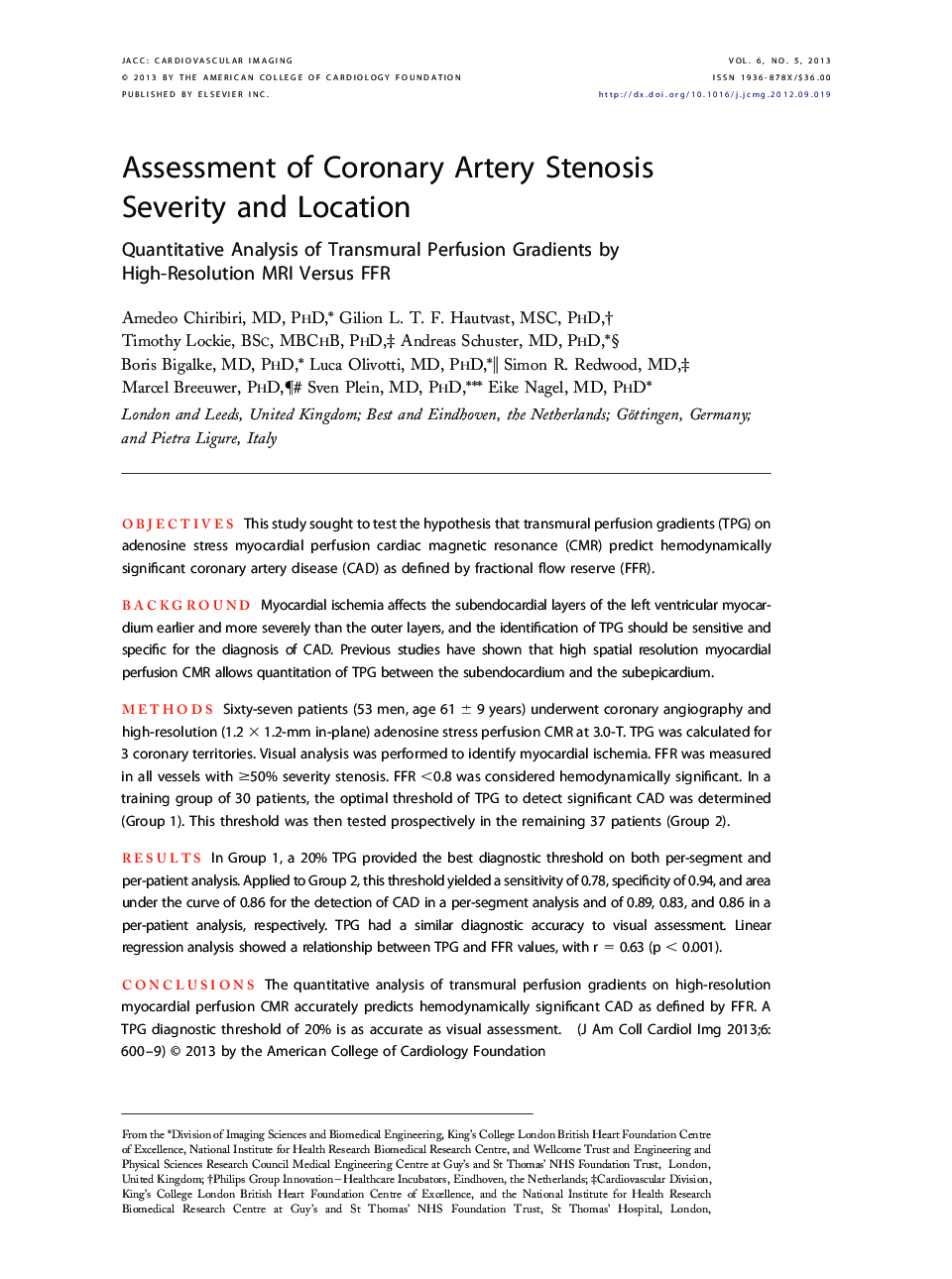| کد مقاله | کد نشریه | سال انتشار | مقاله انگلیسی | نسخه تمام متن |
|---|---|---|---|---|
| 2938218 | 1176928 | 2013 | 10 صفحه PDF | دانلود رایگان |

ObjectivesThis study sought to test the hypothesis that transmural perfusion gradients (TPG) on adenosine stress myocardial perfusion cardiac magnetic resonance (CMR) predict hemodynamically significant coronary artery disease (CAD) as defined by fractional flow reserve (FFR).BackgroundMyocardial ischemia affects the subendocardial layers of the left ventricular myocardium earlier and more severely than the outer layers, and the identification of TPG should be sensitive and specific for the diagnosis of CAD. Previous studies have shown that high spatial resolution myocardial perfusion CMR allows quantitation of TPG between the subendocardium and the subepicardium.MethodsSixty-seven patients (53 men, age 61 ± 9 years) underwent coronary angiography and high-resolution (1.2 × 1.2-mm in-plane) adenosine stress perfusion CMR at 3.0-T. TPG was calculated for 3 coronary territories. Visual analysis was performed to identify myocardial ischemia. FFR was measured in all vessels with ≥50% severity stenosis. FFR <0.8 was considered hemodynamically significant. In a training group of 30 patients, the optimal threshold of TPG to detect significant CAD was determined (Group 1). This threshold was then tested prospectively in the remaining 37 patients (Group 2).ResultsIn Group 1, a 20% TPG provided the best diagnostic threshold on both per-segment and per-patient analysis. Applied to Group 2, this threshold yielded a sensitivity of 0.78, specificity of 0.94, and area under the curve of 0.86 for the detection of CAD in a per-segment analysis and of 0.89, 0.83, and 0.86 in a per-patient analysis, respectively. TPG had a similar diagnostic accuracy to visual assessment. Linear regression analysis showed a relationship between TPG and FFR values, with r = 0.63 (p < 0.001).ConclusionsThe quantitative analysis of transmural perfusion gradients on high-resolution myocardial perfusion CMR accurately predicts hemodynamically significant CAD as defined by FFR. A TPG diagnostic threshold of 20% is as accurate as visual assessment.
Journal: JACC: Cardiovascular Imaging - Volume 6, Issue 5, May 2013, Pages 600–609